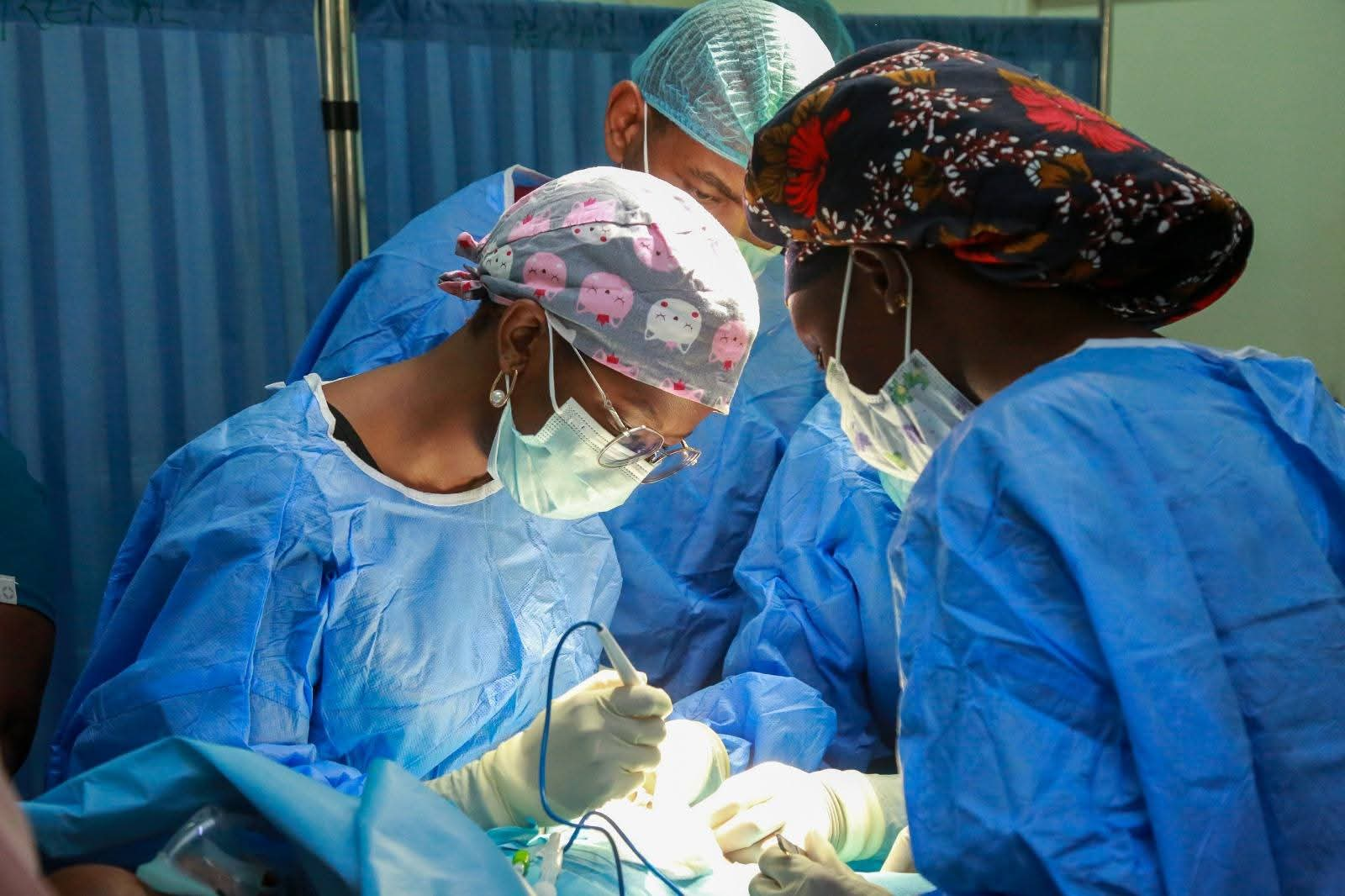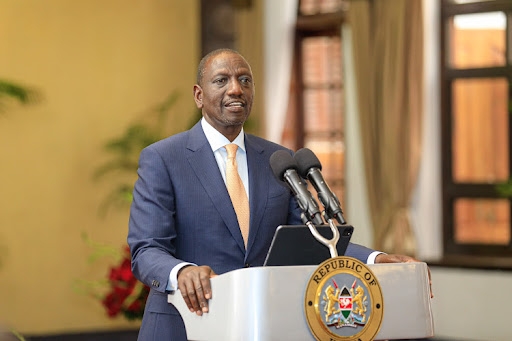
IN Ward 3 at Jaramogi Oginga Odinga Teaching and Referral Hospital, a quiet wave of anticipation runs through parents keeping vigil by their children’s beds.
For many, the past has been filled with unanswered questions, but this week marks a turning point for hope and healing.
For Gladys Achieng, a 27-year-old mother from Seme, the camp is nothing short of a miracle.
Her firstborn son, Harnest Milton, turned nine on the very day surgeons corrected a swelling in his groin, a condition known as hydrocele.
“If I had to pay for this surgery from my own pocket, I wouldn’t have managed to afford it,” she says, her voice heavy with gratitude.
Achieng had spent years moving from hospital to hospital, only to be told that surgery for her son’s condition could not be done locally.
“As a mother, I knew I had to do it for my child, even if it meant waiting,” she recalls. That wait ended when she saw a social media post about the camp and immediately followed up. Today, her son is recovering well, and she calls it the “best birthday gift of his life.”
A few beds away, five-year-old Sheila Bahati is also starting over.
Born with omphalocele, a condition where some abdominal organs develop outside the body, she endured years of stigma and discomfort.
Her mother, Anne Obondo, remembers the ridicule she faced when doctors advised her to terminate the pregnancy.
“I chose to protect my pregnancy,” she says softly.
After years of waiting, Sheila finally underwent a successful operation during the camp.
“It is just a matter of time and she will be better than before,” Anne says with renewed hope.
The wards are full of similar stories, like four-year-old Jacob from Busia, living with bladder exstrophy and anal stenosis, whose father longs for his dignity to be restored, and two-month-old Braven from Ahero, whose mother noticed a swelling in his groin and rushed to the camp for help.
This year , 137 children were listed for corrective surgeries during the annual paediatric surgical camp organised by the Kenya Association of Paediatric Surgeons in collaboration with JOOTRH and Aga Khan Hospital Kisumu.
A total of 124 children were at JOORTH while 13 others were at Agah Khan hospital within the Lakeside city
The three-day KAPS 2025 Annual Children Surgical Camp tackled a wide range of conditions, from common hernias to complex reconstructive operations.
All procedures were fully covered under the Social Health Authority and supported by the partner institutions, ensuring families faced no additional costs.
Children were referred from across Western Kenya and the Lake region counties, including Siaya, Homa Bay, Migori, Kakamega, Bungoma, Nyamira, Kisii, Vihiga, Busia, Kericho, and Nandi.
For many, the camp represented their only chance to access specialised surgical services, which remain scarce outside Nairobi and are prohibitively expensive in private hospitals.
JOOTRH acting CEO Clinton Okise praised the initiative for bringing help to vulnerable families.“Many families in this region cannot afford private facilities or the cost of traveling to Nairobi,” he said.
“By bringing specialists here, we ensure that children can receive lifesaving care closer to home.”
At Aga Khan Hospital Kisumu CEO Jane Wanyama said the surgical camp not only restores health but transforms futures.
“Today is a special day for us because we are witnessing one of our missions come to life,” she said.
“Our mission includes education, research, and most importantly, community health. Through partnerships like this, we ensure that children who need surgery most get it regardless of ability to pay.”
Addressing the media at Agah Khan Hospital, KAPS chairman Prof Francis Osawa emphasised the urgency of such interventions.
“Kenya’s population is over 50 million, with nearly half being children. We estimate around 10 million children live with surgical conditions, yet access to paediatric surgeons remains very limited,” he said.
He noted that 70–80 of the children treated by KAPS are born with congenital malformations requiring reconstructive surgery. “These children are often abandoned or neglected due to disfiguring conditions. That is why camps like this are crucial to bring care closer to families in rural areas.”
Last year, the team operated on 112 children in Garissa within three days. In Kisumu, they expect to reach about 150 children, working alongside the Society of Paediatric Anaesthesiologists of Kenya.
Paediatric surgeon Dr Charles Sande said the camp also helps JOOTRH manage its heavy backlog.
“Some of these cases are very complex and require combined expertise,” he said. “Having colleagues from all over the country here allows us to offer the best outcomes.”
INSTANT ANALYSIS
The conditions treated are often life-threatening or disabling, including children born without an anal opening, with open abdomens, urinary obstructions, absent bladders, misplaced genitals, abdominal wall weaknesses, and tumours.
As Prof. Osawa summed it up, “Through this camp, we are giving these children a second chance at life.”
At both JOOTRH and Aga Khan hospitals, that chance is being realised one child at a time, filling the wards with a renewed sense of hope, healing, and the promise of brighter tomorrows.

















